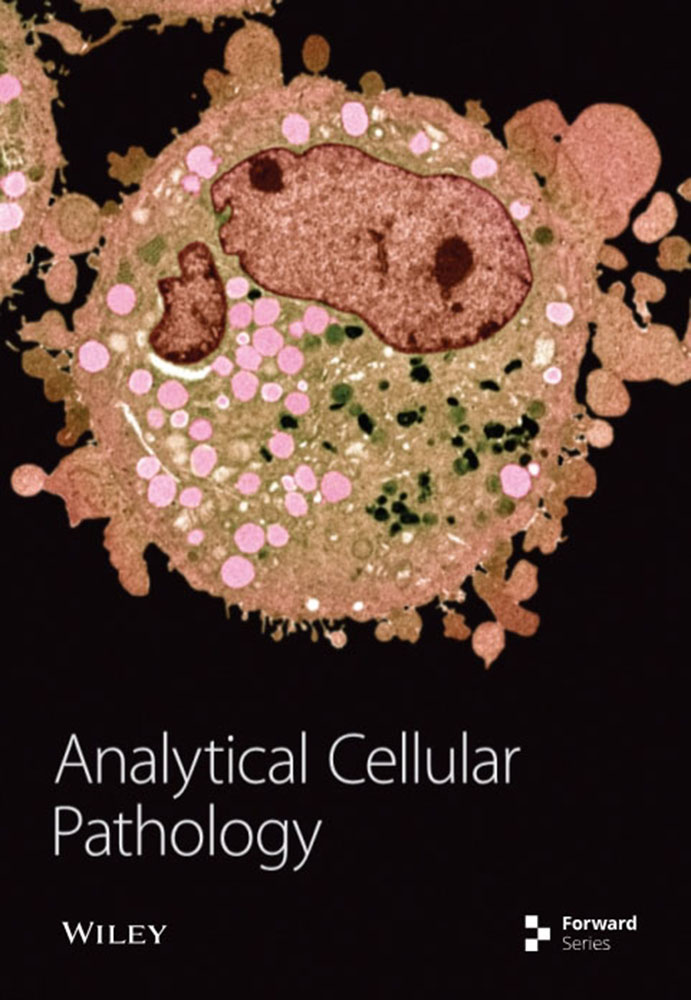黄芪皂苷 IV 通过调节 miR-17-3p/Syndecan-1 保护剪切应力诱导的糖萼损伤并缓解腹主动脉瘤
IF 2.7
4区 医学
Q3 CELL BIOLOGY
引用次数: 0
摘要
背景。本研究旨在分析黄芪甲苷 IV(AS-IV)对腹主动脉瘤(AAA)和糖萼的影响,阐明 AS-IV 的潜在机制。方法。使用猪胰弹性蛋白酶建立 AAA 大鼠模型。腹腔注射 AS-IV 对大鼠主动脉的形态、直径、糖萼以及 miR-17-3p 和 Syndecan-1 (SDC1) 蛋白表达的影响。通过测序鉴定了健康人、未接受治疗的 AAA 患者和接受治疗的 AAA 患者外周血样本中差异表达的 miRNA。利用双荧光素酶报告实验验证了 miR-17-3p 与 SDC1 之间的关系。在体外,在人主动脉内皮细胞(HAECs)中诱导剪切应力以模拟 AAA。过表达 miR-17-3p 以评估 AS-IV 对 HAECs 中 miR-17-3p 和 SDC1 表达、细胞凋亡以及糖萼的影响。结果显示AS-IV 可减轻 AAA 大鼠的主动脉损伤,缩小主动脉直径并减轻糖萼的损伤。此外,AS-IV 还抑制了 AAA 大鼠体内 miR-17-3p 表达的增加,促进了 SDC1 的表达。miR-17-3p 可抑制 HAECs 中 SDC1 蛋白的表达。在体外 AAA 环境中,miR-17-3p 在 HAECs 中上调,而 SDC1 则下调。AS-IV抑制了miR-17-3p的表达,促进了SDC1的表达,减轻了剪切应力诱导的HAECs细胞凋亡和糖萼损伤。过表达 miR-17-3p 会阻断 AS-IV 在 HAECs 中诱导的 SDC1 表达促进、糖萼保护和凋亡抑制。结论:miR-17-3p 可通过靶向 SDC1 破坏主动脉内皮细胞的糖萼。AS-IV 可通过抑制 miR-17-3p 促进 SDC1 的表达,从而保护糖萼并缓解 AAA。本文章由计算机程序翻译,如有差异,请以英文原文为准。
Astragaloside IV Protects against Shear Stress-Induced Glycocalyx Damage and Alleviates Abdominal Aortic Aneurysm by Regulating miR-17-3p/Syndecan-1
Background. The present study aimed to analyze the impact of astragaloside IV (AS-IV) on abdominal aortic aneurysm (AAA) and the glycocalyx, elucidating the potential mechanism of AS-IV. Methods. Rat models of AAA were established using porcine pancreatic elastase. The effects of intraperitoneal AS-IV injection on the morphology, diameter, and glycocalyx of the aorta and the expression of miR-17-3p and Syndecan-1 (SDC1) protein were examined. Differentially expressed miRNAs from peripheral blood samples of healthy individuals, untreated patients with AAA, and treated patients with AAA were identified through sequencing. The relationship between miR-17-3p and SDC1 was validated using a dual-luciferase reporter assay. In vitro, shear stress was induced in human aortic endothelial cells (HAECs) to simulate AAA. Overexpression of miR-17-3p was performed to assess the effects of AS-IV on miR-17-3p and SDC1 expressions, apoptosis, and glycocalyx in HAECs. Results. AS-IV mitigated aortic damage in AAA rats, reducing the aortic diameter and alleviating glycocalyx damage. In addition, it suppressed the increase in miR-17-3p expression and promoted SDC1 expression in AAA rats. Peripheral blood miR-17-3p levels were significantly higher in patients with AAA than in healthy individuals. miR-17-3p inhibited the SDC1 protein expression in HAECs. In the in vitro AAA environment, miR-17-3p was upregulated and SDC1 was downregulated in HAECs. AS-IV inhibited miR-17-3p expression, promoted SDC1 expression, and mitigated shear stress-induced apoptosis and glycocalyx damage in HAECs. Overexpression of miR-17-3p blocked AS-IV–induced SDC1 expression promotion, glycocalyx protection, and apoptosis suppression in HAECs. Conclusion. miR-17-3p may damage the glycocalyx of aortic endothelial cells by targeting SDC1. AS-IV may promote SDC1 expression by inhibiting miR-17-3p, thereby protecting the glycocalyx and alleviating AAA.
求助全文
通过发布文献求助,成功后即可免费获取论文全文。
去求助
来源期刊

Analytical Cellular Pathology
ONCOLOGY-CELL BIOLOGY
CiteScore
4.90
自引率
3.10%
发文量
70
审稿时长
16 weeks
期刊介绍:
Analytical Cellular Pathology is a peer-reviewed, Open Access journal that provides a forum for scientists, medical practitioners and pathologists working in the area of cellular pathology. The journal publishes original research articles, review articles, and clinical studies related to cytology, carcinogenesis, cell receptors, biomarkers, diagnostic pathology, immunopathology, and hematology.
 求助内容:
求助内容: 应助结果提醒方式:
应助结果提醒方式:


